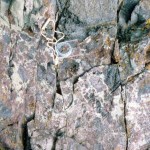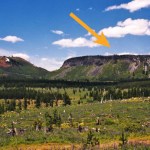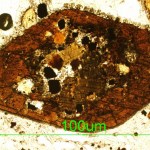Word of the Day
Continuing my series where I try to define words of volcanic interest, the new Eruptions Word of the Day is a favorite of mine, mostly because my undergraduate thesis on Vinalhaven Island in Maine ended up dealing with a lot of these types of deposits ... so, without further ado, the word is peperite!
Now, what exactly is a "peperite"?
Well, a picture is worth 1,000 words, right (so that will save me some time):
Peperite in the Vinalhaven Diabase, Vinalhaven Island, Maine. Image by Erik Klemetti. Click on the image to see a larger version.
Let's make some observations:
The rock is full of…
The latest Eruptions Word of the Day is "Tuya".
So, what is a tuya?
This is a tuya:
A tuya! Click on the image to see a larger version. Image by Erik Klemetti.
Alright, well, that doesn't entirely help, does it?
Lets look at the feature the arrow indicates. Some observations:
(1) It is low and broad.
(2) It has a relatively flat top.
(3) It is steep-sided.
(4) If you look real close, you can see crudely columnar jointing in the some of the outcrops near the top.
(5) If you had a piece of it in your hand, you'd know it was a volcano rock (andesite, very rarely you can find bits that are quite…
So, I've had requests on the blog to help to do some defining of volcanologic terms on the blog, so I thought I'd try a new column called Eruptions Word of the Day. I'm not sure how often it will run, but let's give it a try.
Eruptions Word of the Day for July 5, 2010: Dacite
Dacite is a magma type defined by silica (SiO2) content between 63-68 (or 69) weight percent. That is the textbook definition, but some other typical characteristics of dacite lavas (or magmas) is the presence of certain minerals: plagioclase feldspar and hydrous minerals (containing water in their mineral structure)…


